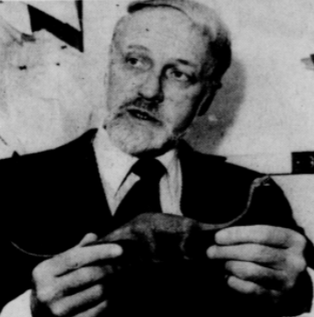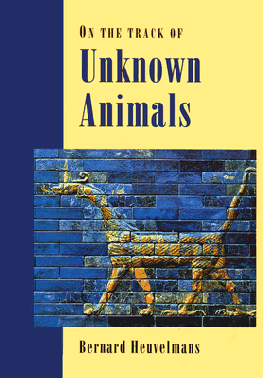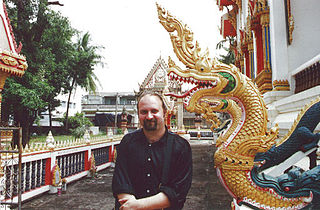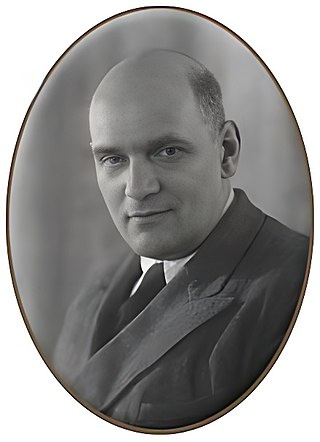
Cryptozoology is a pseudoscience and subculture that searches for and studies unknown, legendary, or extinct animals whose present existence is disputed or unsubstantiated, particularly those popular in folklore, such as Bigfoot, the Loch Ness Monster, Yeti, the chupacabra, the Jersey Devil, or the Mokele-mbembe. Cryptozoologists refer to these entities as cryptids, a term coined by the subculture. Because it does not follow the scientific method, cryptozoology is considered a pseudoscience by mainstream science: it is neither a branch of zoology nor of folklore studies. It was originally founded in the 1950s by zoologists Bernard Heuvelmans and Ivan T. Sanderson.

The mokele-mbembe, Lingala for "one who stops the flow of rivers", is a mythical water-dwelling entity that supposedly lives in the Congo River Basin, sometimes described as a living creature, sometimes as a spirit. Descriptions vary widely among those who claim to have seen the creature, but it is often described as a large quadrupedal herbivore with smooth skin, a long neck and a single tooth or horn.

The Yeti is an ape-like creature purported to inhabit the Himalayan mountain range in Asia. In Western popular culture, the creature is commonly referred to as the Abominable Snowman. Many dubious articles have been offered in an attempt to prove the existence of the Yeti, including anecdotal visual sightings, disputed video recordings, photographs, and plaster casts of large footprints. Some of these are speculated or known to be hoaxes.
Loren Coleman is an American cryptozoologist who has written over 40 books on a number of topics, including the pseudoscience and subculture of cryptozoology.
Thomas Baker Slick Jr. was a San Antonio, Texas-based inventor, businessman, adventurer, and heir to an oil business. Slick's father, Thomas Baker Slick Sr., a.k.a. "The King of the Wildcatters", had made a fortune during the Oklahoma oil boom of the 1910s. He was notable for discovering Oklahoma's then-largest oil field, the Cushing Oil Field.

The Pangboche Hand is an artifact from a Buddhist monastery in Pangboche, Nepal. Supporters contend that the hand is from a Yeti, a scientifically unrecognized animal purported to live in the Himalayan mountains. A finger bone from the hand was tested and the DNA shown to be human.

Ivan Terence Sanderson was a British biologist and writer born in Edinburgh, Scotland, who became a naturalized citizen of the United States. Sanderson wrote on nature and travel, and was a frequent guest on television talk shows and variety shows of the 1950s and '60s, displaying and discussing exotic animals.

Expedition Everest – Legend of the Forbidden Mountain, also known as Expedition Everest, is a steel roller coaster built by Vekoma at Disney's Animal Kingdom at the Walt Disney World Resort in Lake Buena Vista, Florida. The ride is themed around the Yeti protecting the Forbidden Mountain next to Mount Everest. It is the only roller coaster at Disney's Animal Kingdom, and the tallest roller coaster at any Disney theme park.

Lego Adventurers was a Lego theme based on an early 20th century 'explorer' concept. It centred around the main character named Johnny Thunder and a team of explorers who go on adventures. Unlike other Lego themes, which take place in a fictional "Lego Universe", most of the Adventurers sets took places in real-world locations, such as Egypt, the Amazon rainforest, the Himalayas, India, and China. The only fictional sub-theme took place on an island where prehistoric creatures still lived. The theme was first introduced in 1998. The product line was discontinued in 2003 and replaced with the Lego Pharaoh's Quest theme in 2011.

Roy P. Mackal was a University of Chicago biologist best known to the general public for his interest in cryptozoology.

Stephen James Backshall is a British naturalist, explorer, presenter and writer, best known for BBC TV's Deadly 60.

On the Track of Unknown Animals is a cryptozoological book by the Belgian-French zoologist Bernard Heuvelmans that was first published in 1955 under the title Sur la Piste des Bêtes Ignorées. The English translation by Richard Garnett was published in 1958 with some updating by the author and with a foreword by Gerald Durrell. A revised and abridged edition was published in 1965, and a further edition in 1995. It is credited with introducing the term cryptozoology and established its author as the "Father of Cryptozoology."

Richard Freeman is a cryptozoologist, author, zoological journalist, and WebTV Presenter. He is also the zoological director of the Centre for Fortean Zoology (CFZ), and co-edits both the journal, Animals & Men and several editions of the annual CFZ Yearbook. Freeman has written, co-written, or edited a number of books, and has contributed widely to both Fortean and zoological magazines, as well as other newspapers and periodicals, including Fortean Times and Paranormal Magazine.
David Hatcher Childress is a French-born American author, and the owner of Adventures Unlimited Press, a publishing house established in 1984 specializing in books on unusual topics such as ancient mysteries, unexplained phenomena, pseudohistory, and historical revisionism. His own works primarily concentrate on pseudoarchaeological and pseudoscientific topics such as "UFOs, secret societies, suppressed technology, cryptozoology [and] conspiracy theory." Childress, having no degree, refers to himself as a "rogue archaeologist".
Ing. Jaroslav Mareš was a Czech biologist, traveller and writer.

Boris Fyodorovich Porshnev was a Soviet historian known for his works on popular revolts in Ancien Régime France and a doctor of social sciences working on psychology, prehistory, and neurolinguistics as relating to the origins of man.
Expedition Africa is an eight-part reality television miniseries that originally aired from May 31, 2009 to July 12, 2009 on History. Produced by Mark Burnett, the program follows four modern day explorers—a navigator, a wildlife expert, a survivalist, and a journalist—as they substantially retrace H.M. Stanley's famed expedition to find Dr. David Livingstone. Their route deviates somewhat from Stanley's in that it includes a treacherous crossing of the Uluguru Mountains, which Stanley circumvented. Additionally, whereas Stanley took roughly 8 months to find Livingstone, the explorers on the show have 30 days to complete the 970-mile journey deep into the interior of Tanzania.

Forrest Galante is an American outdoor adventurer, television personality, and animal enthusiast. He primarily seeks out animals on the brink of extinction. He is the host of the television shows Extinct or Alive on Animal Planet and "Mysterious Creatures with Forrest Galante," as well as multiple Shark Week shows.












